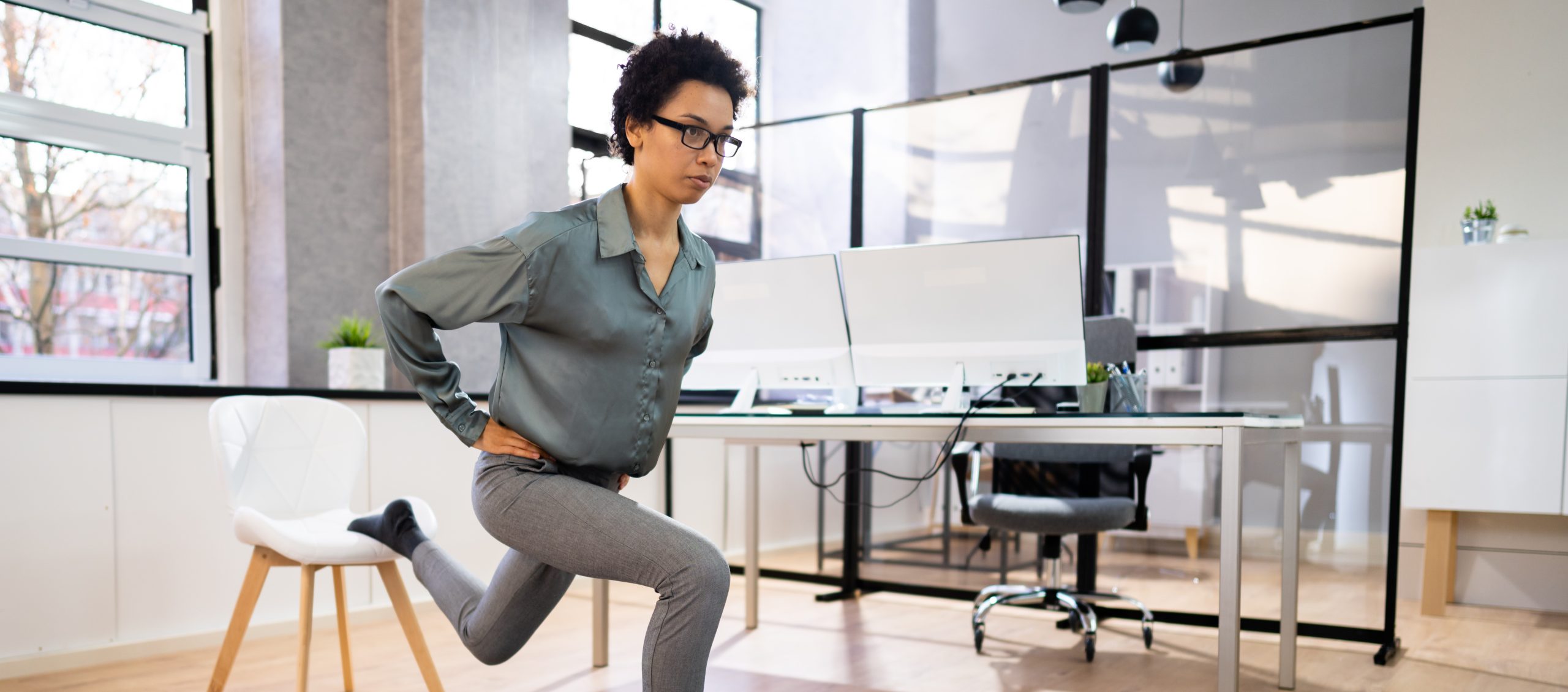In today’s working world, many people spend most of their workdays being sedentary. But research shows that breaking up sedentary time and incorporating physical activity during your workday can help you feel less stressed and more productive. Unfortunately, more than one-third (37%) of workers in Canada report not having enough time for workday physical activity. But there’s a simple, time-efficient and effective way around this problem: calisthenics exercises.
What are calisthenics exercises?
Calisthenics exercises are strength-training exercises that use gravity and your own body weight as resistance. Because you don’t need any equipment to perform them, these exercises are ideal for sneaking into your busy workday. Some examples of calisthenics exercises are push-ups, planks, lunges, squats and burpees.
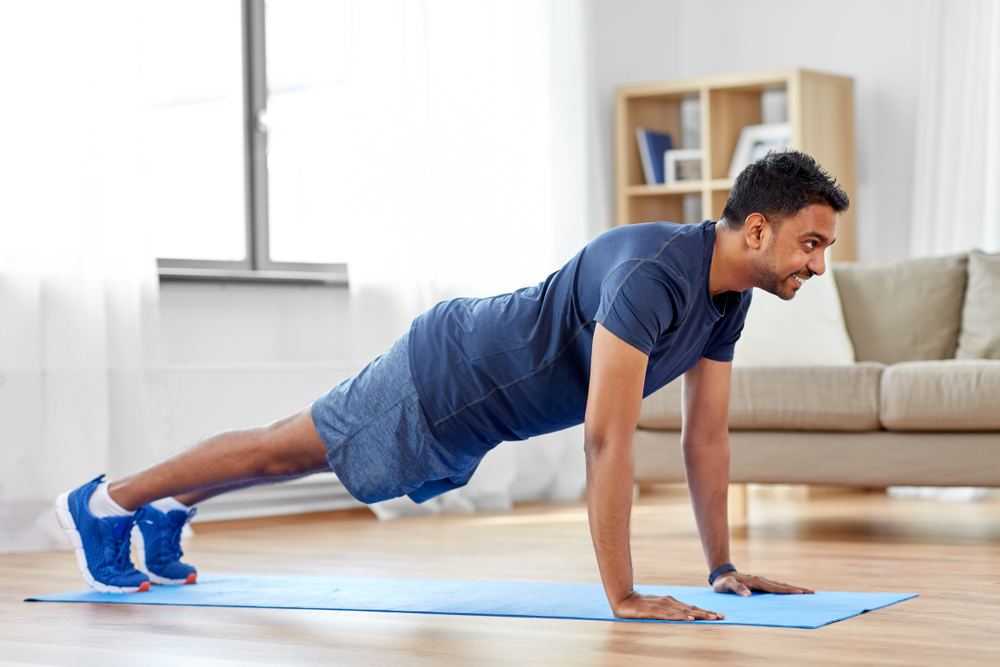
Where did calisthenics originate?
Calisthenics originated in ancient Greece. In fact, the word “calisthenics” comes from the Greek words kalos, which translates to “beauty”, and stenos, meaning “strength”. These exercises regained popularity in the 19th century.
Calisthenics vs. weightlifting exercises
Unlike calisthenics exercises, weightlifting exercises require using weighted equipment such as dumbbells, barbells and kettlebells. Contrary to popular belief, research shows that calisthenics and weightlifting exercises create similar physical results in the short term.
5 benefits of calisthenics exercises
1. Equipment-free
Calisthenics exercises are some of the simplest exercises because, as mentioned above, you don’t need equipment to perform them – all you need is your body and some open space. This means you can do them anywhere, anytime, whether that’s at home, outdoors or even at work – just find a corner in your workspace or at your desk and get moving!
2. Time-efficient
You can complete short and intense calisthenics workouts in a matter of minutes, which makes them easy to squeeze into your workday.
3. Great for beginners
If you’re just starting your physical activity journey, performing calisthenics exercises can help you learn correct form and boost your confidence before you add weights or do more advanced variations.
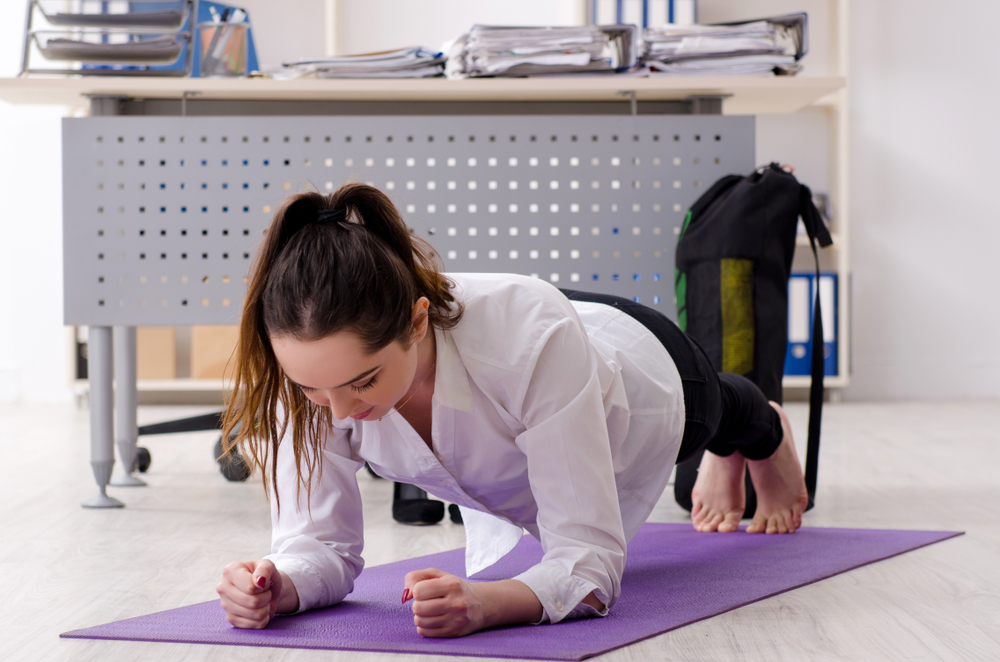
4. Can provide a full-body workout
Calisthenics exercises often involve compound movements that work several muscle groups at the same time. So, if you do a variety of lower- and upper-body calisthenics exercises on your active break from work, you can get in a quick, full-body workout.
5. Build your strength, endurance, flexibility and mobility
Because they mimic natural bodily movements like pulling, pushing, jumping and squatting, calisthenics exercises can enhance your functional strength, helping you with everyday life or work tasks. They also provide a solid strength foundation for if or when you eventually add external weight to your workouts or try other forms of strength-training like CrossFit and bodybuilding. Plus, calisthenics exercises help increase your muscular endurance (the amount of time you can keep up an exercise) and can even boost your flexibility and mobility since they require a full range of motion.
6 workday calisthenics exercises for beginners
Now that you know about calisthenics exercises and their many benefits, why not try some yourself? To help you get started, here are six calisthenics exercises to try during your workday:
1. Push-up:
Start by lying on your stomach with your feet shoulder-width apart. Bring your hands directly under your shoulders. Keeping your back straight and core tight, push your body weight up on your knees until your elbows are extended but not locked. Now, slowly lower yourself back to the ground. Then, return to your starting position and repeat.
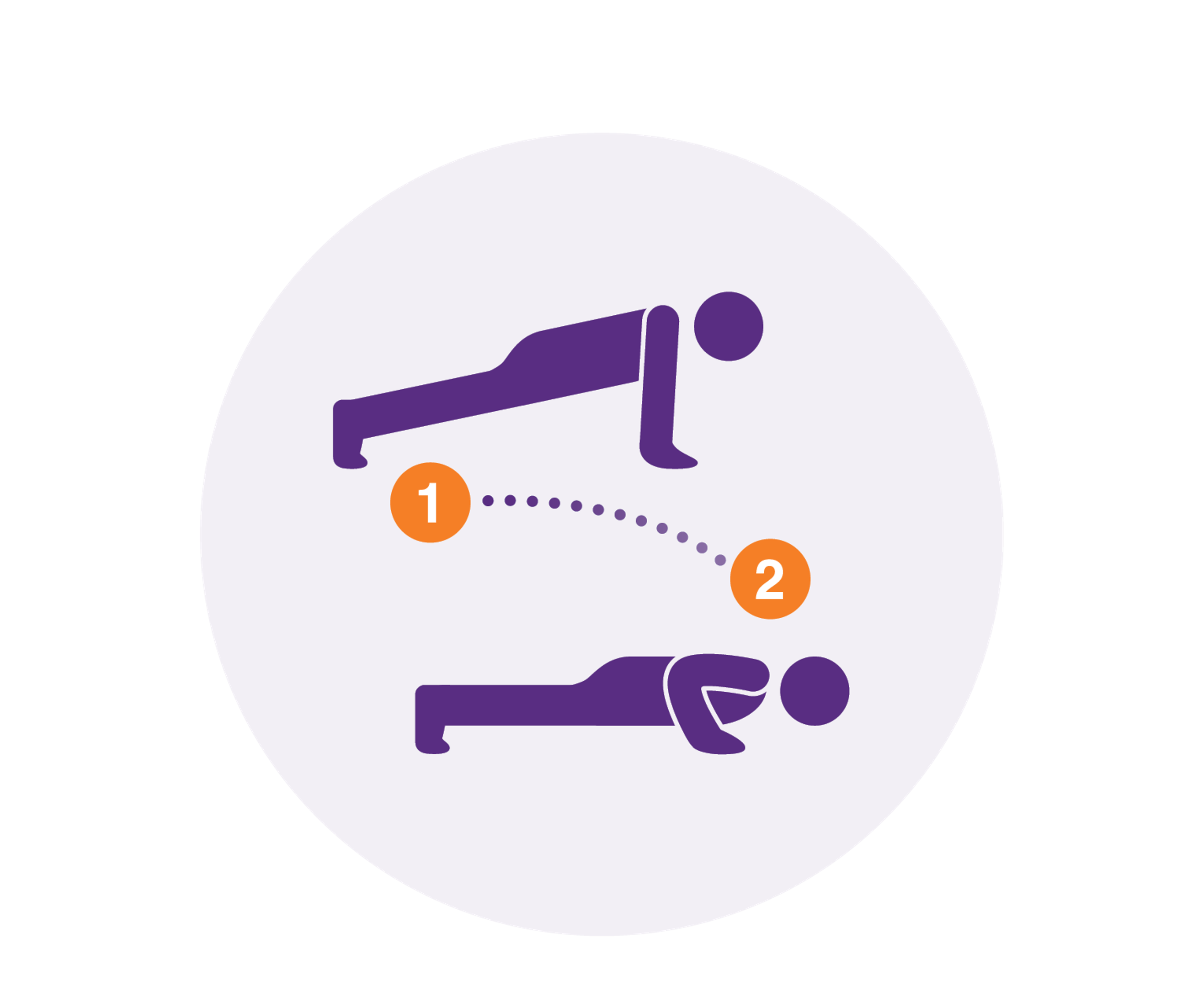
Alternative exercise: Wall push-up:
Stand facing the wall with your feet hip-width apart. Place your hands on the wall beneath your shoulders, keeping your arms extended but not locking your elbows.
With control, lean your body toward the wall as far as you can go, keeping your elbows pointing down. Then, with your back straight, push powerfully back until your arms are extended but not locked.
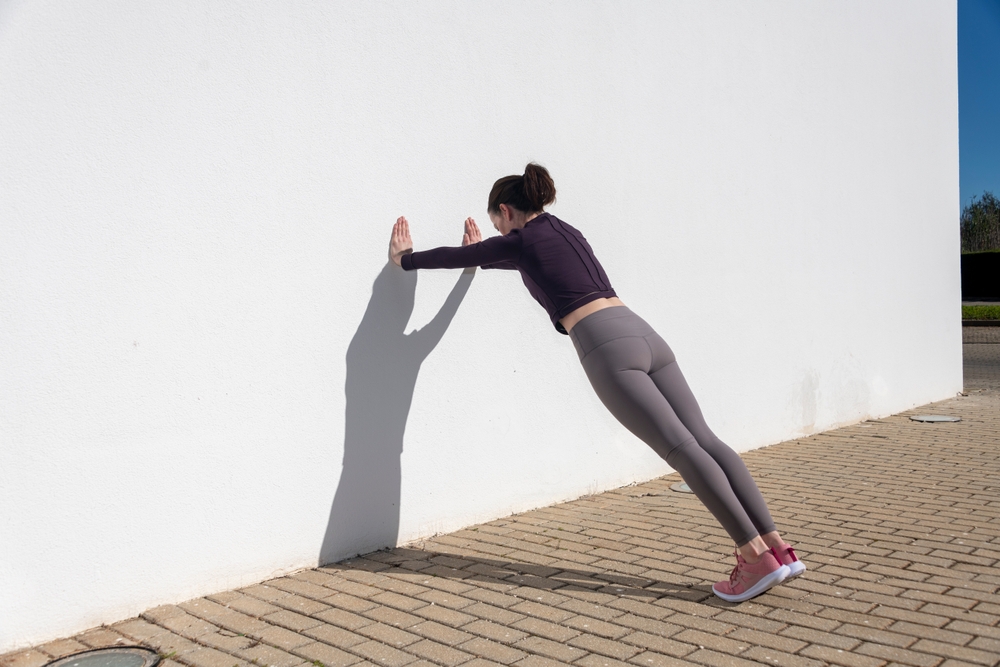
2. Plank:
Begin by lying on your stomach with your feet shoulder-width apart and forearms placed on the ground. Ensure that your elbows are directly under your shoulders, keeping your head in a neutral position.
Next, draw in your abs toward your spine and contract your glutes. From this position, lift your torso off the floor from your knees, keeping your back straight. Hold this position for 20, 45 or 60 seconds.
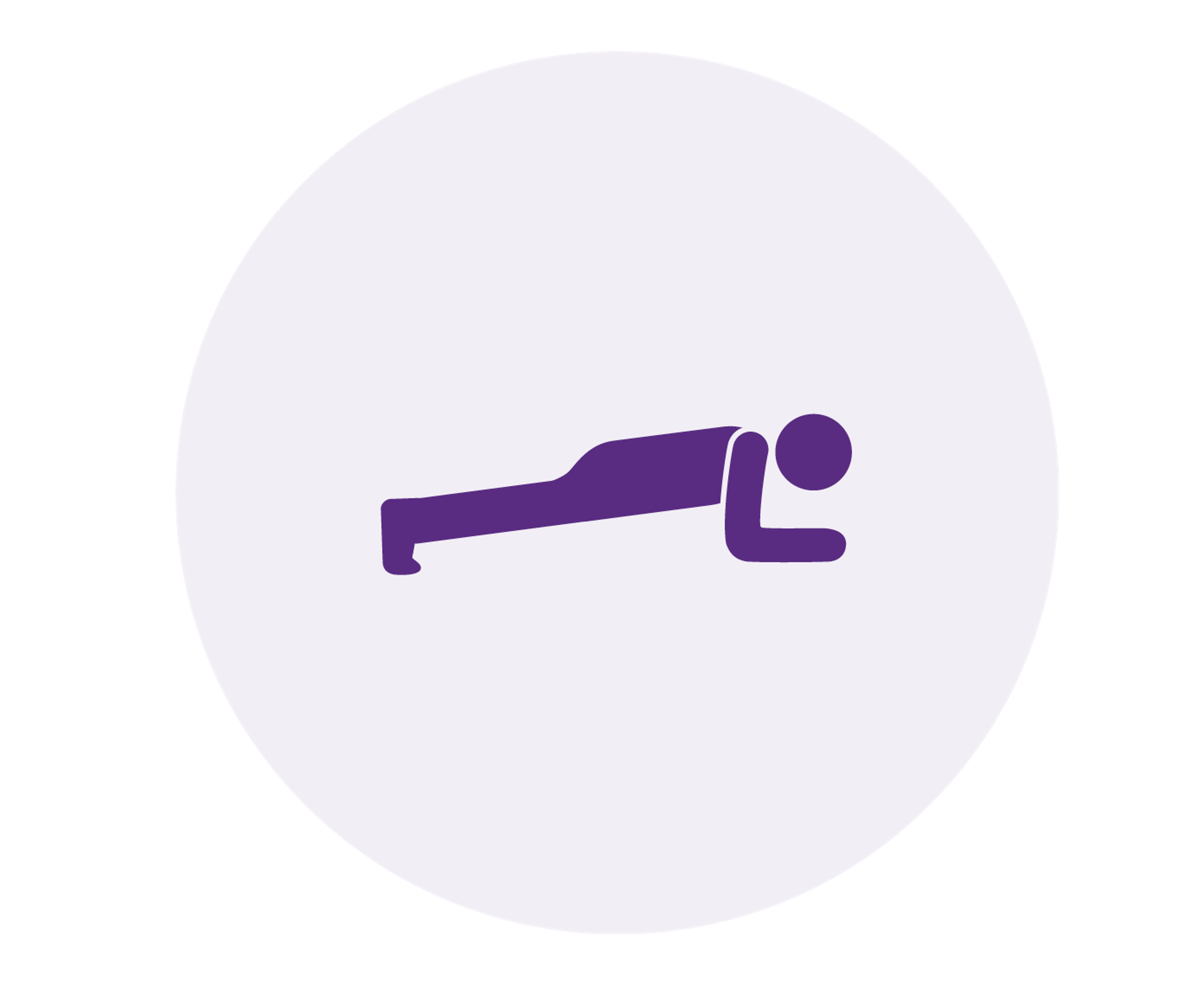
3. Walking lunge:
Stand with your feet hip-width apart. Take a step forward with your right foot, then slowly bend both of your knees until your back knee is just above the floor.
Stand back up, take a step forward with your left foot and bend both knees until your back knee is just above the floor. Continue down the hallway until you reach the washroom or kitchen.

4. Squat/Sit-to-Stand:
Sit on the front of a stable chair and keep your toes back underneath your knees with your feet hip-distance apart. Lean forward slightly to bring your nose over your toes. Using your leg strength and while keeping your arms extended, lift yourself up into a standing position.
With your arms raised and using your lower body to resist gravity, slowly lower yourself back down. If you need a little more support, use your arms to push off the chair or your knees, but if you’re feeling confident, try performing the exercise without chair support!
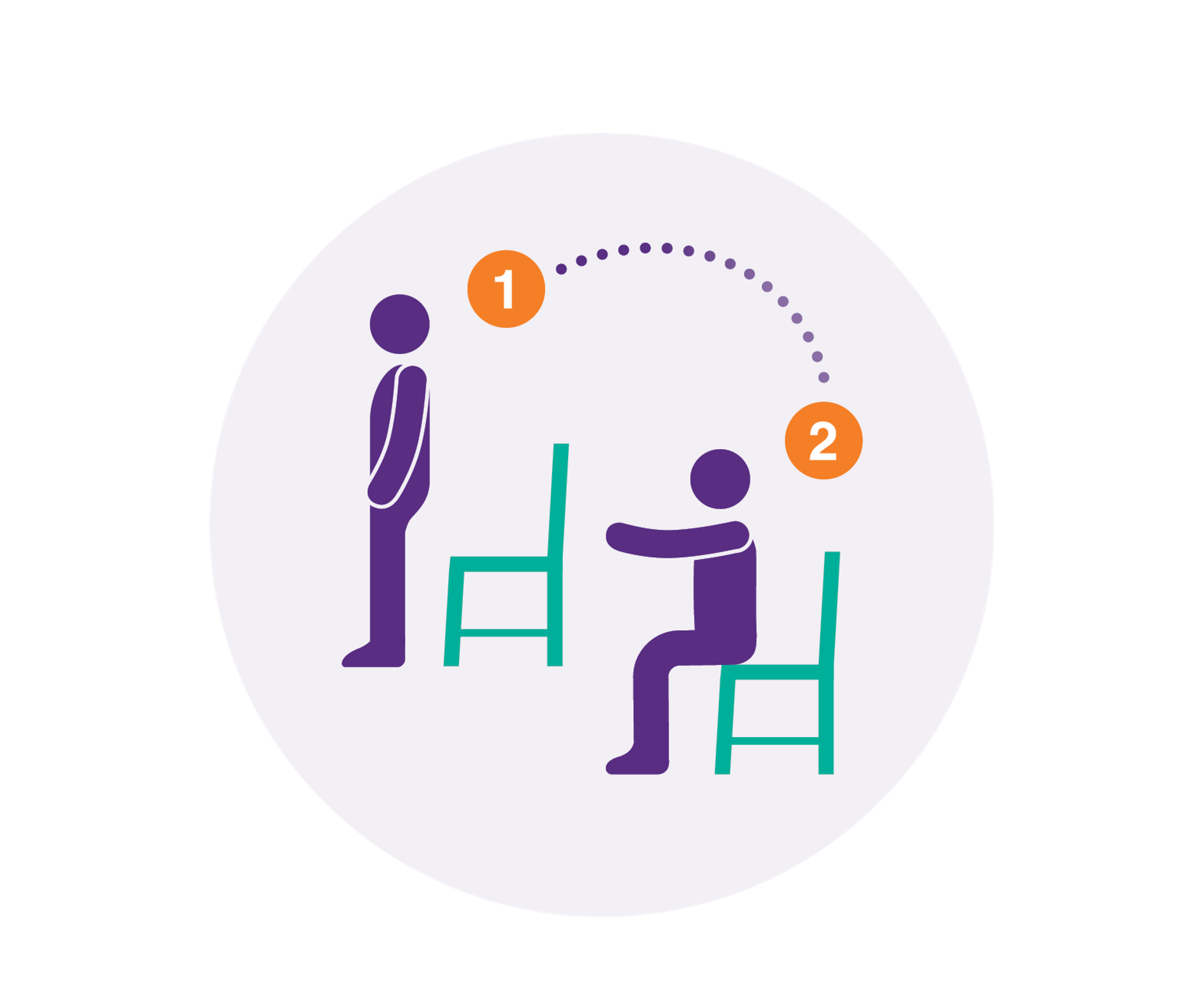
5. Burpee:
Stand with your feet shoulder-width apart, weight in your heels, and your arms at your sides. Push your hips back, bend your knees and lower your body into a squat. Place your hands on the floor in front of you, shifting your weight onto your hands.
Jump or walk your feet out, back to a plank position, forming a straight line from your head to heels. Jump your feet back so that they land just outside of your hands. Reach your arms over head and jump up into the air, then repeat.
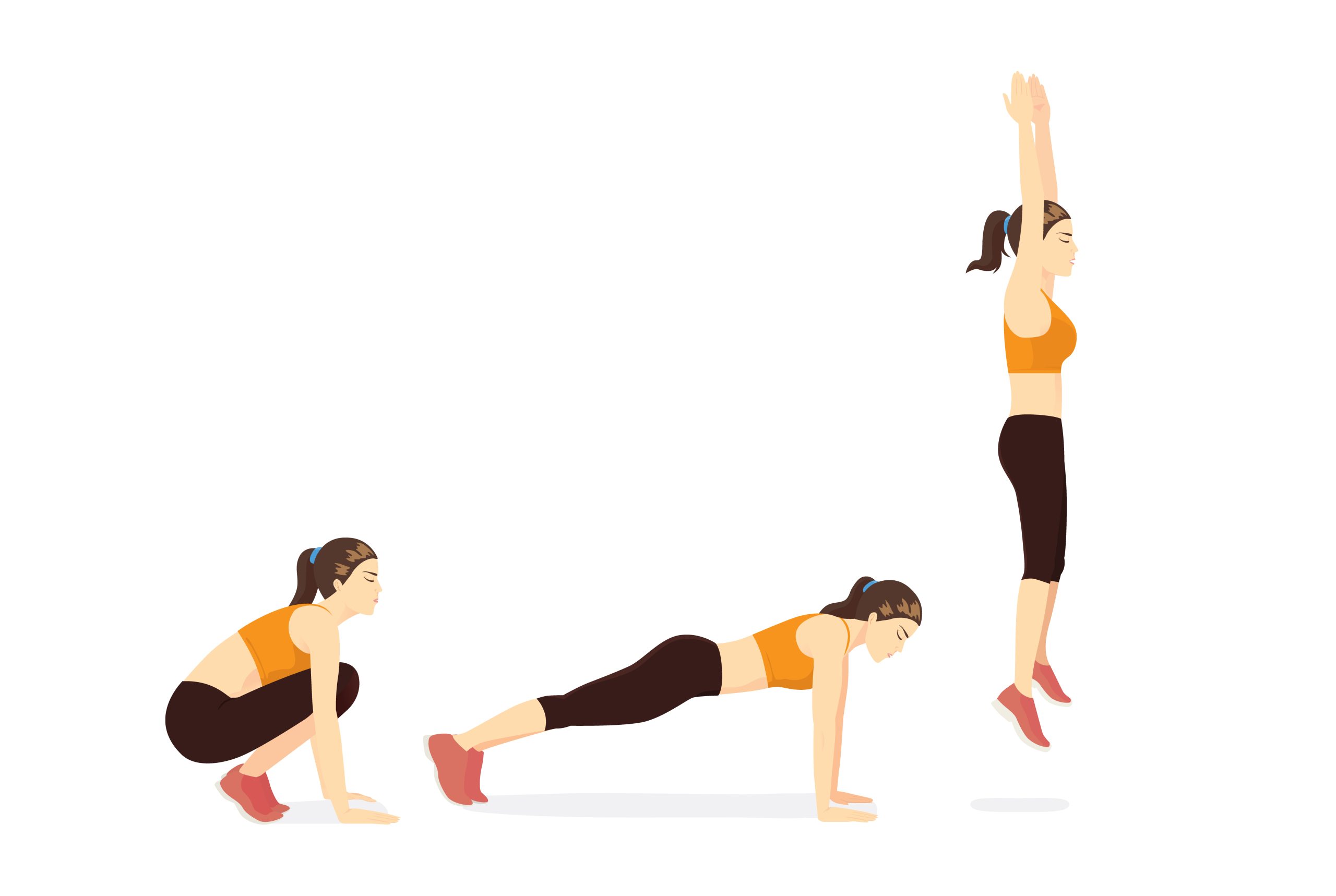
6. Seated twists:
Sit toward the end of a chair, knees bent with your feet flat on the floor, arms up with your elbows open and fingertips to your temples. Contracting your abs, twist slowly from your torso to one side as far as is comfortable, pause to hold the position for a moment, then quickly but smoothly contract your abs and twist your torso back to the center position, and then proceed to the opposite side.



